Charger LiitoKala Lii-S2


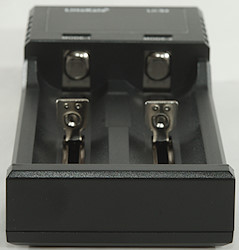
This is a universal charger for four chemistries with current selection based on slots and number of batteries.



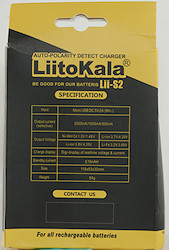
I got the charger in cardboard box with the specifications printed on it.
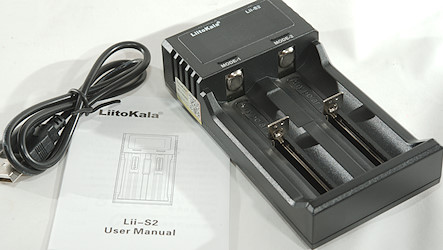
In the box was the charger, a usb cable and a instruction sheet.
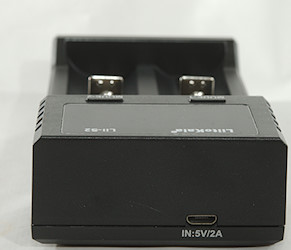
The charger is powered from usb.
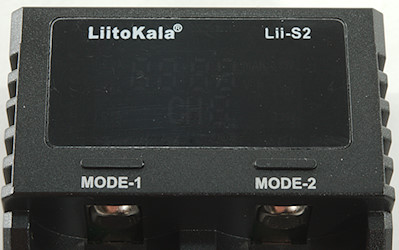
The user interface is a display and a button for each slot to select chemistry and current.
Chemistry is selected when by a fast press, hold down to change current.
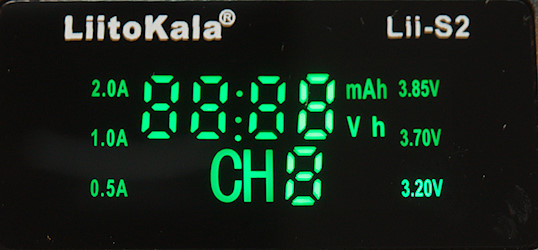
At power on all segments are shown on the display.
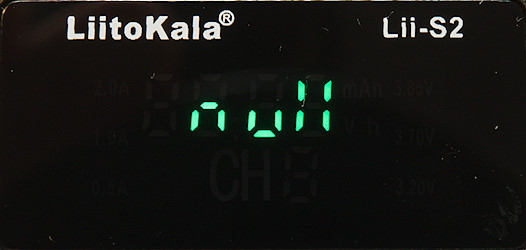
Without batteries the display sows null.
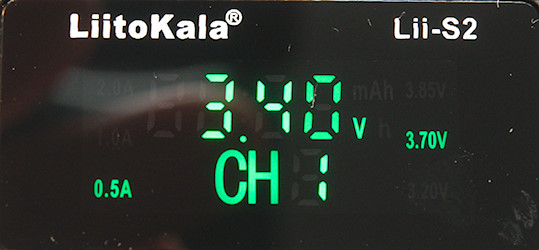
A LiIon battery in slot #1.
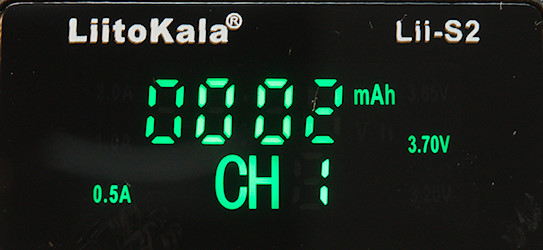
Charged capacity.
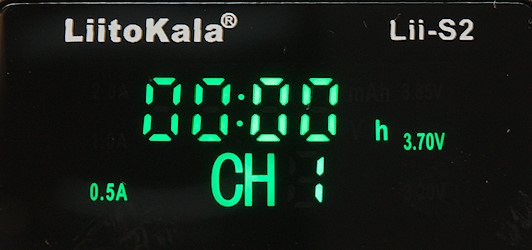
And time used.
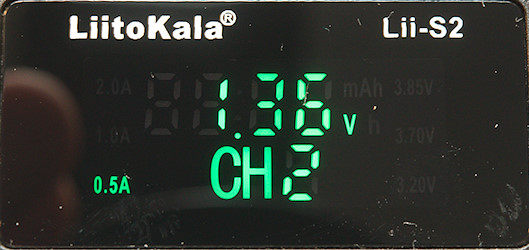
NiMh battery in slot #2.
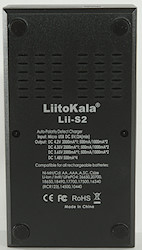
There is a easy readable specification on the back of the charger.
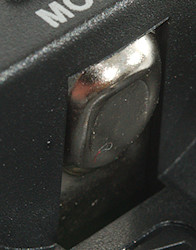
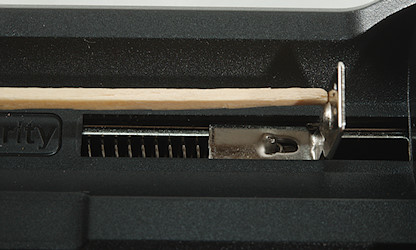
The charger can handle both button top and flat top batteries.
The slider moves smoothly and can hand cells from 32mm to 71mm long.
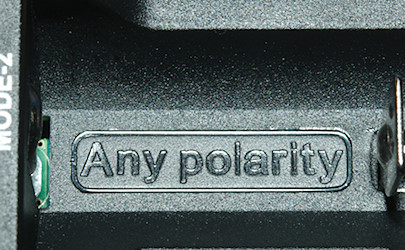
This charger do not care about polarity, it will detect the actual polarity of the battery and then charger.


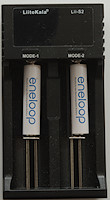

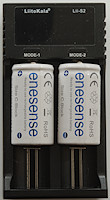
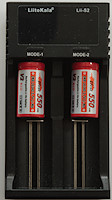
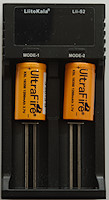
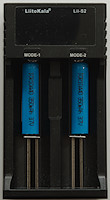
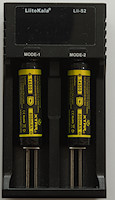
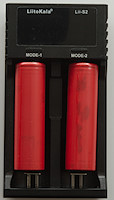
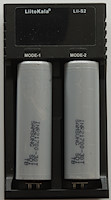
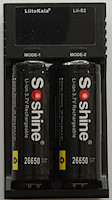
The charger can handle 71 mm long batteries, including flat top cells.
Measurements charger
- Power consumption when idle without batteries is 20mA from usb
- Below 0.5V the charger will not recognize a battery
- Between 0.5V and 1V the charger will charge with lower current
- At 1V the charger the charger will assume NiMH and charge with full current
- At 1.6V the charger will assume a full NiMH battery.
- Above 2V the charger will assume LiIon and ask for chemistry, it will use full charge current.
- When charge is finished the main charge it will charge with a few mA
- Charger will not restart if voltage drops
- Charge will restart charging after power loss, or battery insertion.
- When not connected to power it will drain with less than 0.3mA from a battery.
- Voltmeter will start at 0.5V where it will show 0.3V
- From 0.7V voltmeter is within 0.05V
- Voltmeter stops updating when charging terminates.
- Maximum voltmeter reading is 3.65V, 4.20V and 4.35V depending on battery chemistry.
Charging 4.2V LiIon
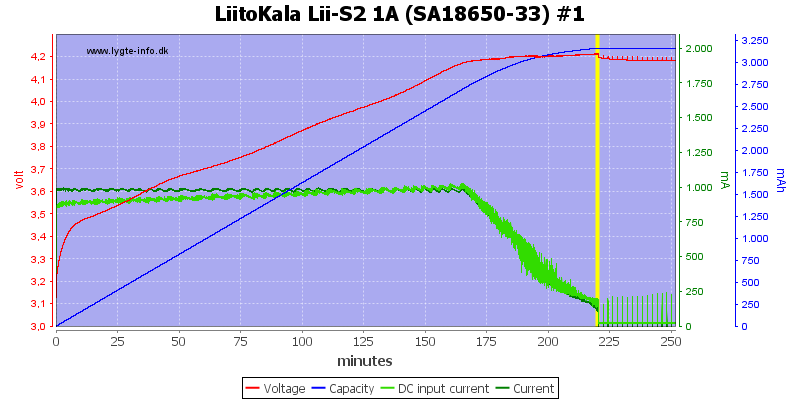
The charger do a good CC/CV charge with termination around 140mA and then it do some trickle charge?
Display shows: 3373mAh in 3:40
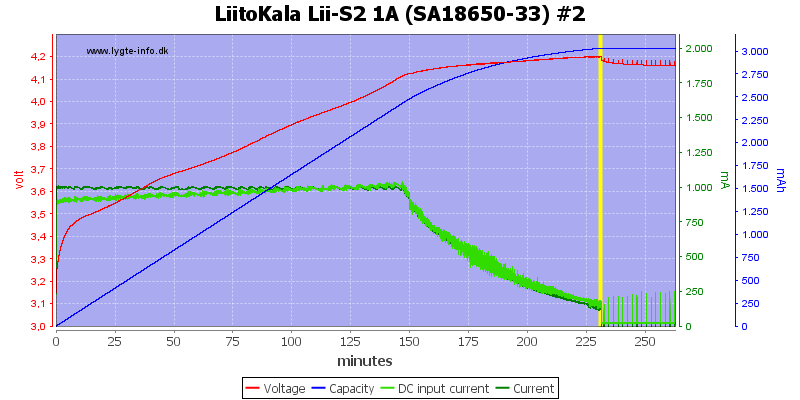
Second slot looks similar.
Display shows: 3158mAh in 3:51

Display shows: 2622mAh in 2:59
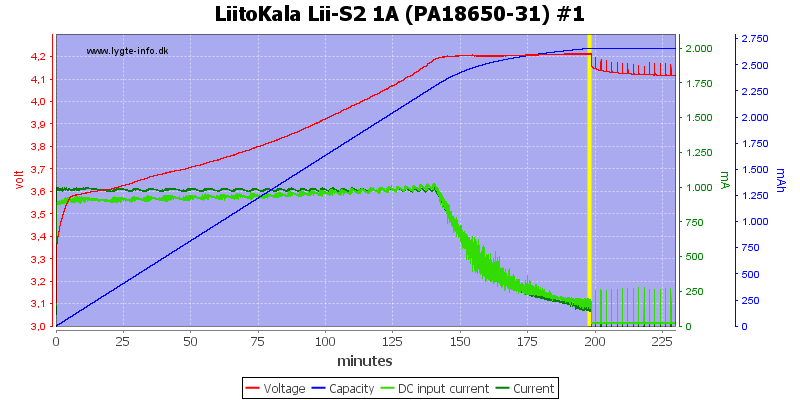
There is no surprise with these two cells.
Display shows: 2818mAh in 3:18
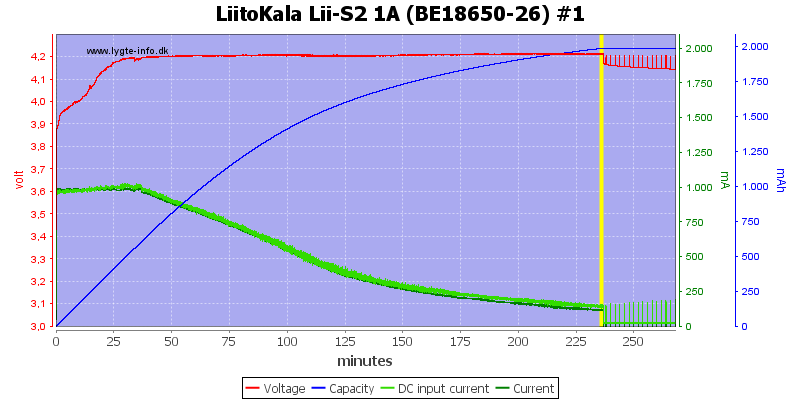
As expected the old cell goes into CV charge fairly fast.
Display shows: 2032mAh in 3:56
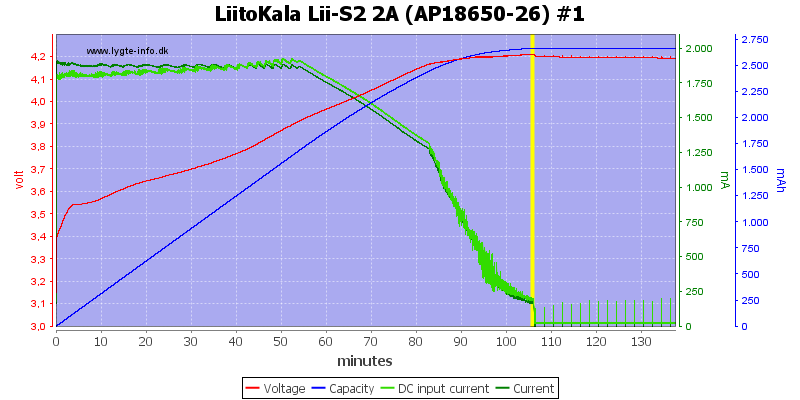
When charging at 2A the charger cannot maintain full current until the CV phase, but starts reducing current early (Most usb chargers do this). The mAh count is on the high side.
Display shows: 2950mAh in 1:45
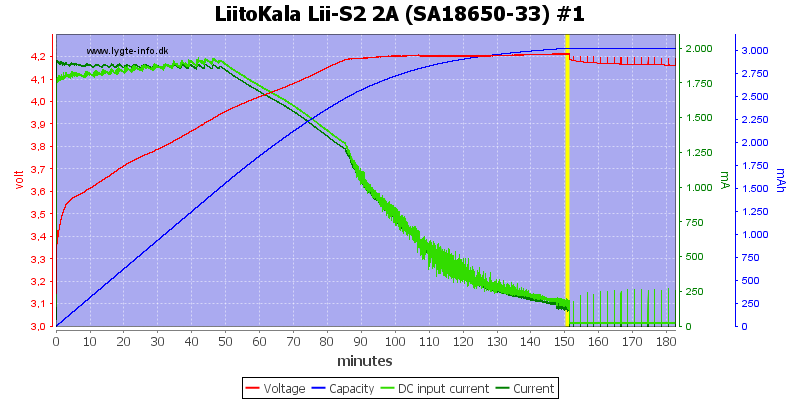
A normal 18650 charged at 2A is charged a bit faster, but not much.
Display shows: 3320mAh in 2:30
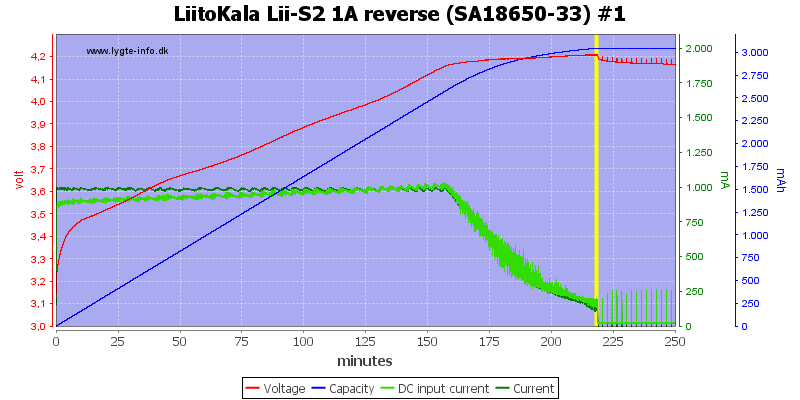
Flipping polarity of the battery is not a problem with this charger, the curve looks the same.
Display shows: 3224mAh in 3:38
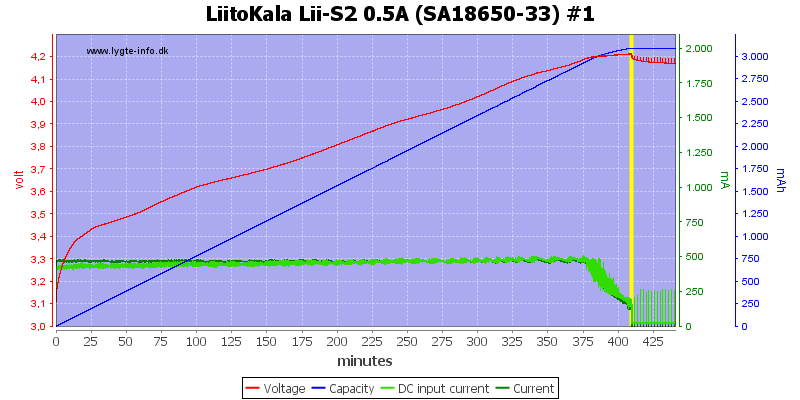
It is also possible to charge a 18650 with 0.5A, but it is slow.
Display shows: 3198mAh in 6:49
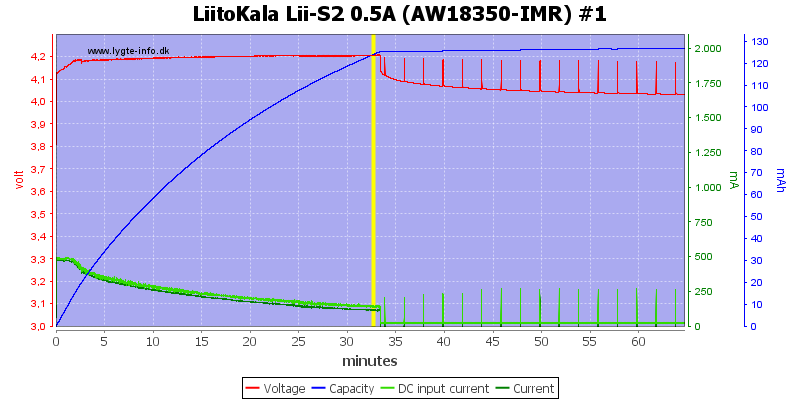
This old and worn down cell is charged as well as possible.
Display shows: 110mAh in 0:33
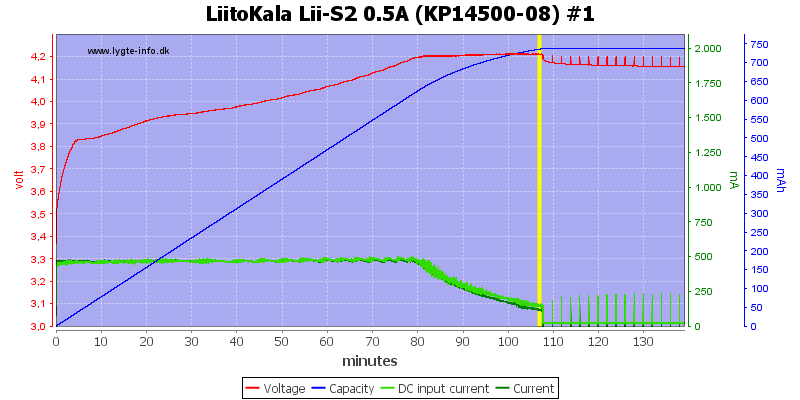
This small cell is not as worn down and is charged fine.
Display shows: 750mAh in 1:47
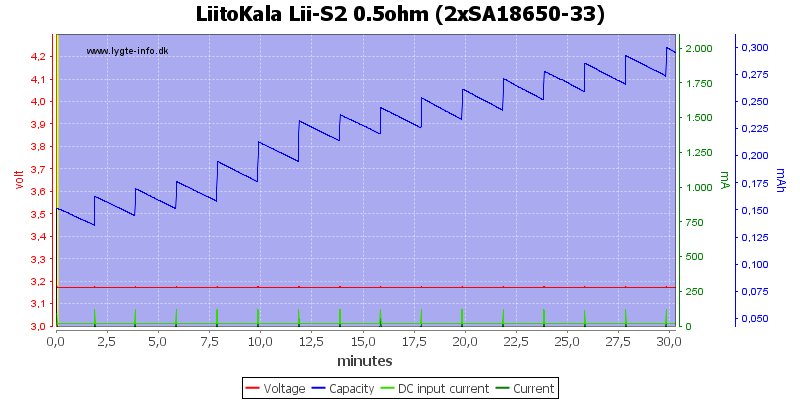
Adding a 0.5ohm resistor in series with the usb charger to simulate a weak charger or long cable failed. The charger cannot work, it charges with a trickle current and says it is finished without charging the battery.
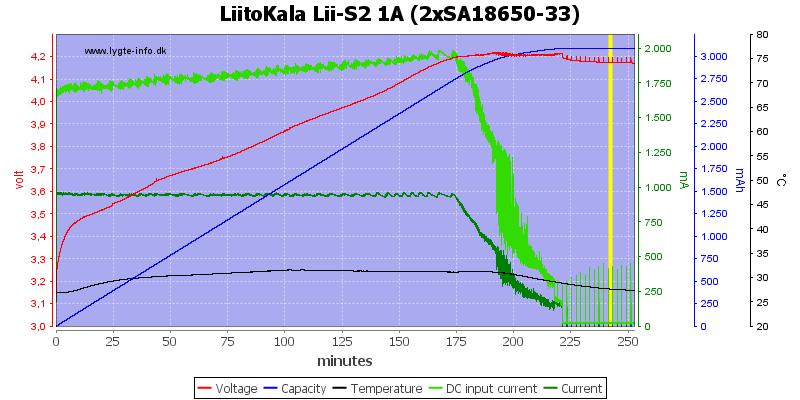
With two batteries the maximum current is 1A for each and this works fine.
Display shows: 3394mAh in 3:40
Display shows: 3446mAh in 3:36

M1: 30.3°C, M2: 30.8°C, M3: 40.7°C, HS1: 44.4°C
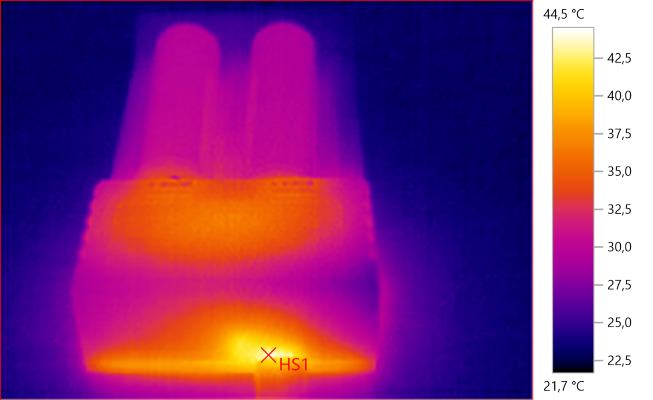
HS1: 44.5°C
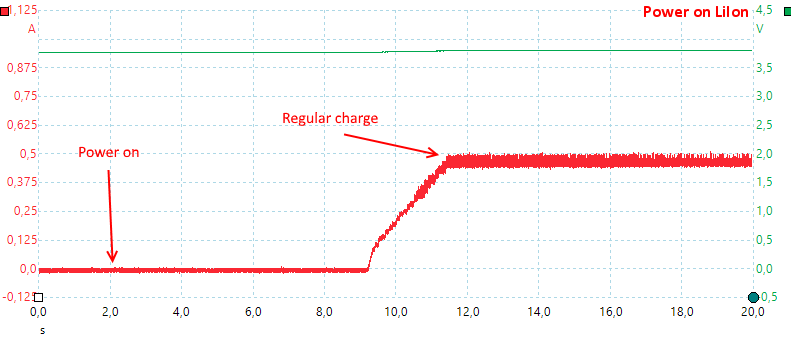
The charger needs some time to start, this is because it is waiting for the user to select chemistry. When charging is started this is locked in.

Charge current can be adjusted at any time by holding down the button two seconds for that slot.
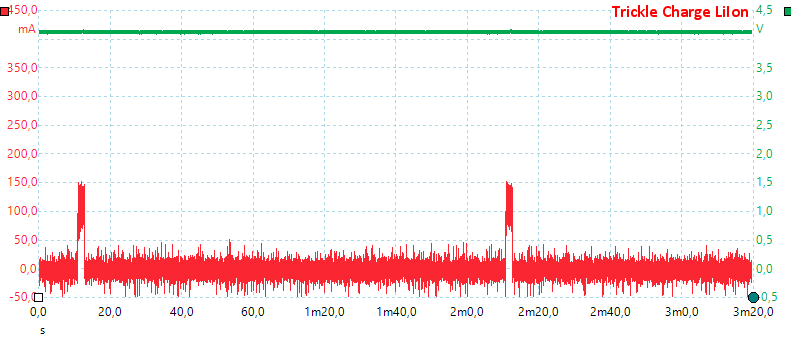
Trickle charge is 120 seconds between pulses, each pulse is 1.8s wide at 125mA, this is an average current of 1.9mA.
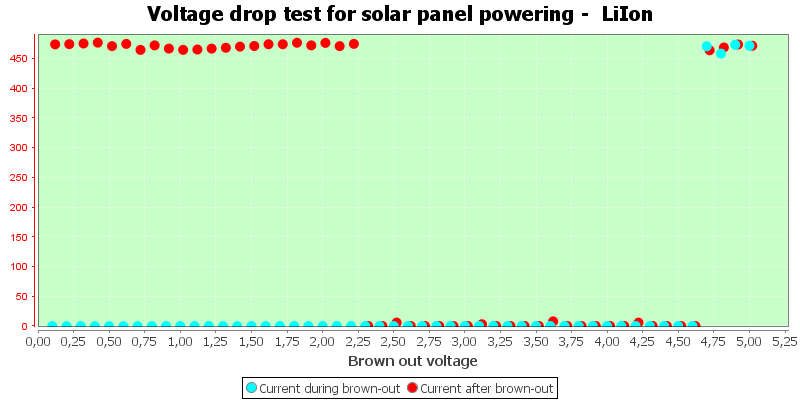
This charger do not like unstable supply, it will lockup and not charge anymore.
Charging 3.6V LiIon (LiFePO4)
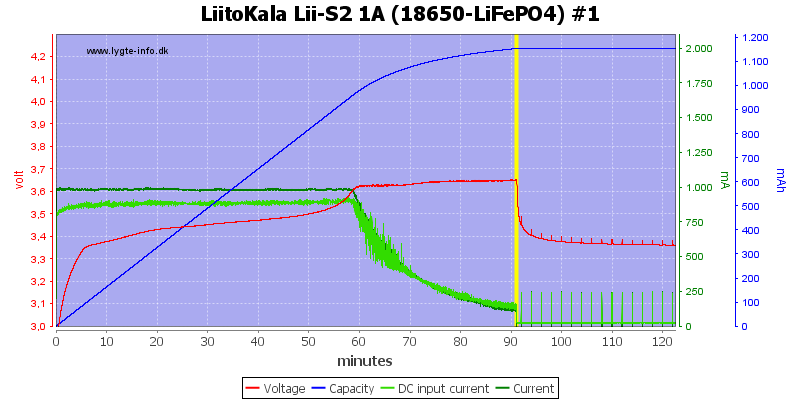
Display shows: 1215mAh in 1:31
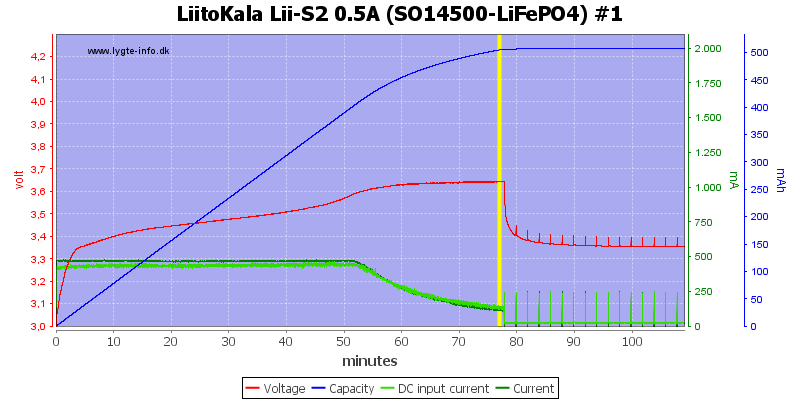
The two LiFePO4 batteries looks fine, except for the trickle charge.
Display shows: 509mAh in 1:17
Charging 4.35V LiIon
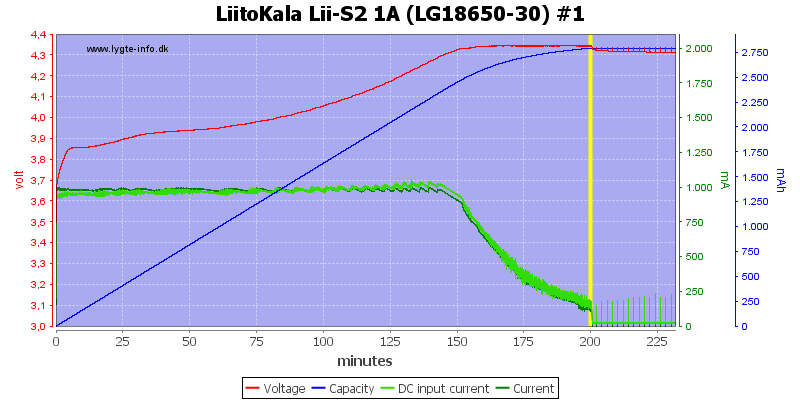
High voltage LiIon is also fine.
Display shows: 2962mAh in 3:20
Charging NiMH
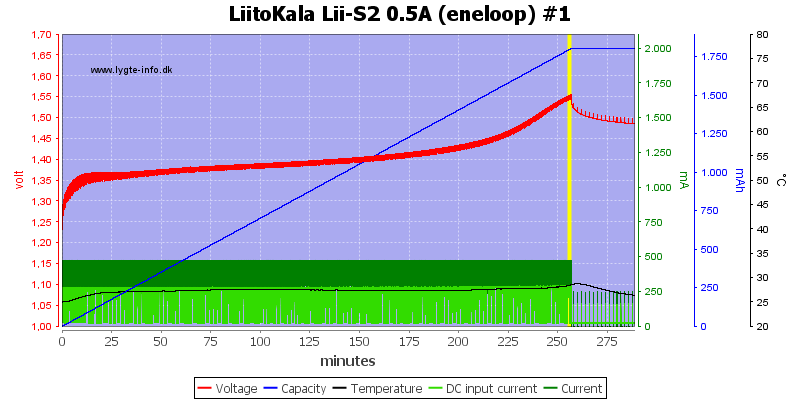
The charger uses voltage termination for this cell and as can be seen on the black line the temperature has started to raise, this means the cell is just about full.
Display shows: 1684mAh in 4:16

It is the same with this cell.
Display shows: 1635mAh in 4:09
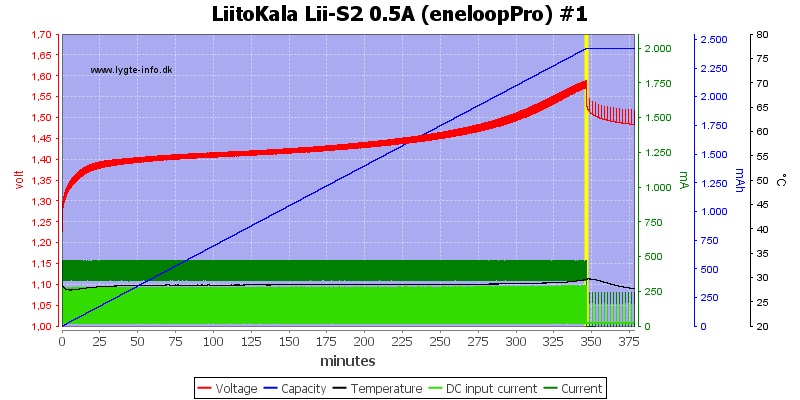
This high capacity cell also looks like voltage termination.
Display shows: 2273mAh in 5:46
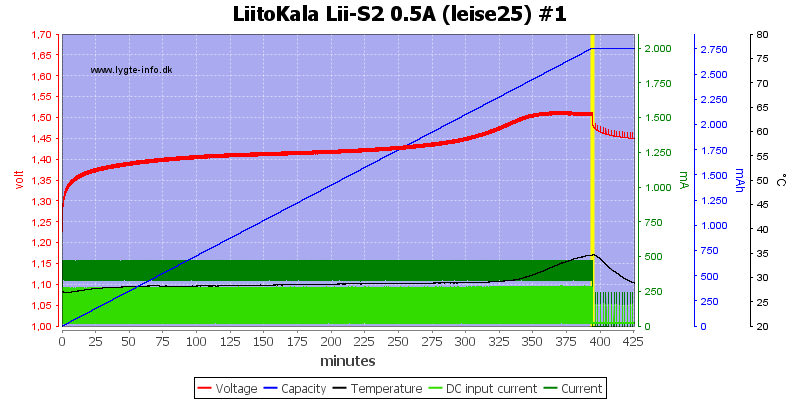
This cell looks like -dv/dt termination.
Display shows: 2583mAh in 6:33
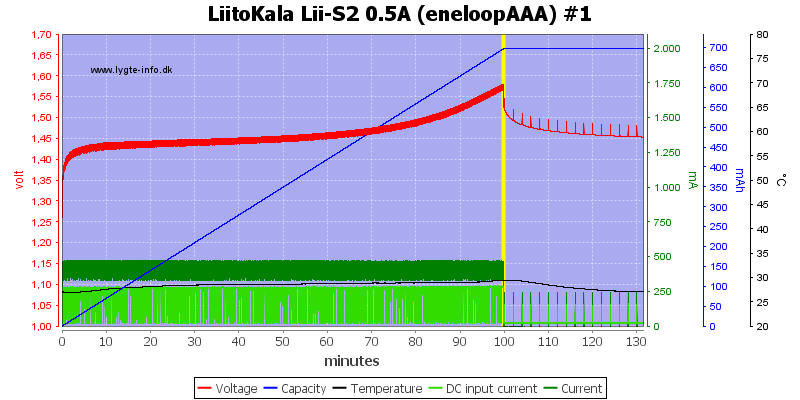
Again a voltage termination.
Display shows: 654mAh in 3:39
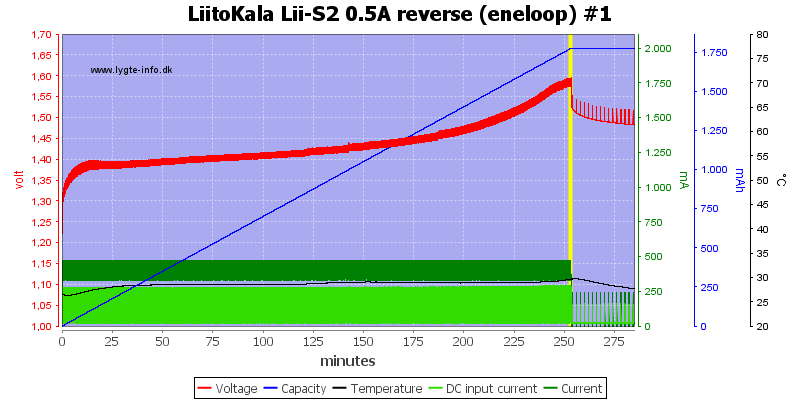
When mounting the battery in reverse direction the charging looks similar.
Display shows: 1660mAh in 4:13
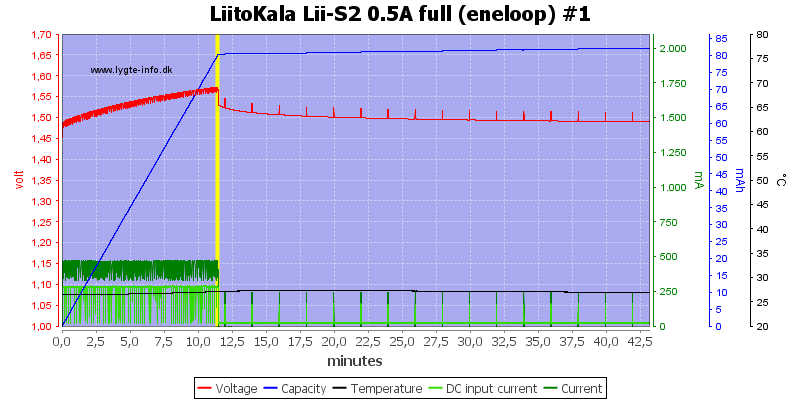
A full battery is detected on voltage, due to the fairly low charge current it takes about 12 minutes.
Display shows: 75mAh in 0:11
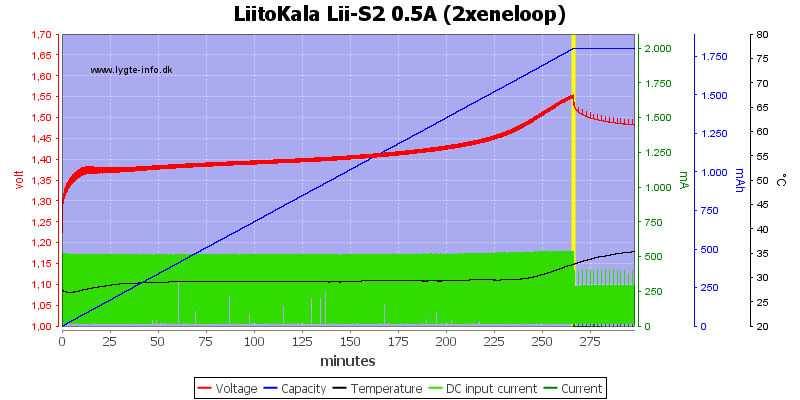
It is no problem charging two NiMH at the same time, but one of the cells was a bit slow to termination.
Display shows: 1742mAh in 4:25
Display shows: 2014mAh in 5:07
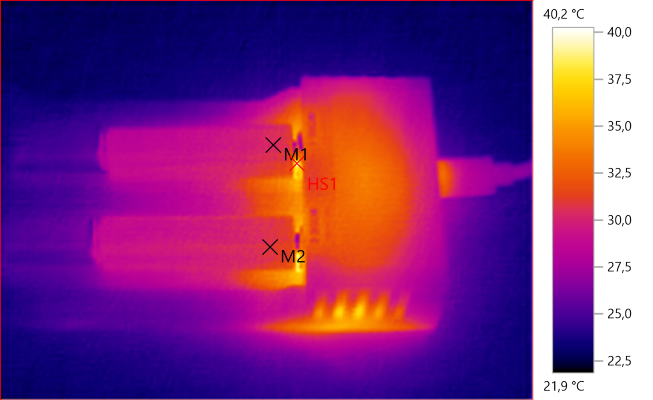
M1: 30.3°C, M2: 30.8°C, HS1: 40.2°C
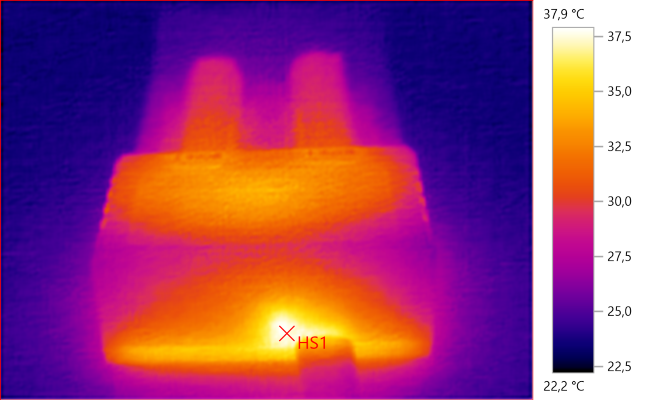
HS1: 37.9°C
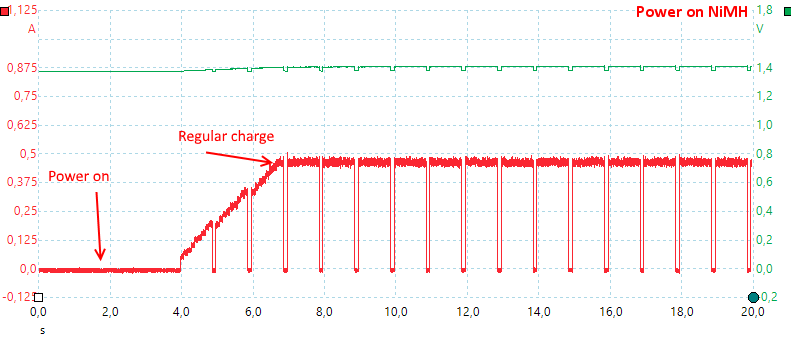
For NiMH there is no chemistry selection and the charger starts faster, as usual there is pauses to measure voltage.
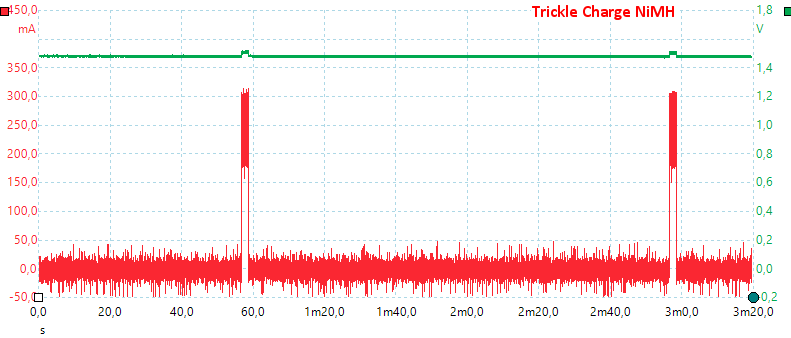
The trickle charge here is double of LiIon with 250mA pulses, this means a average current of about 4mA, low enough to not be a problem for NiMH.
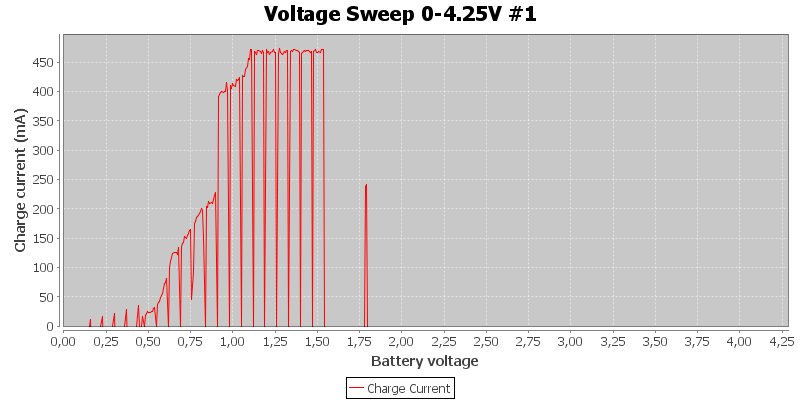
The charge profile for NiMH, the drops in the curve is because NiMH charge pauses at regular intervals and not related to the voltage.
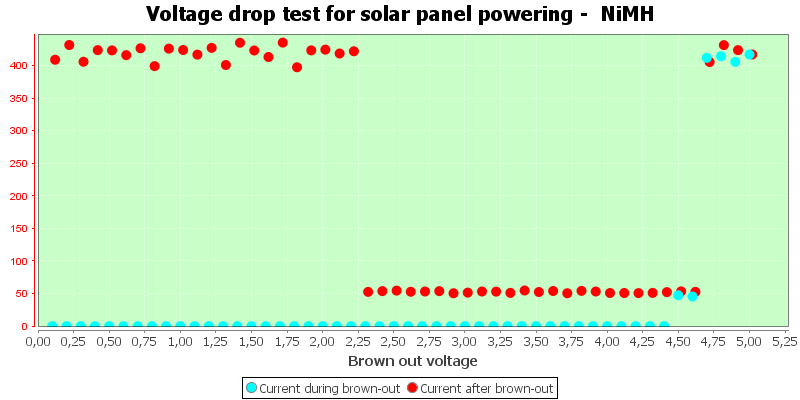
With NiMH it do not lockup, but the charge current drops to 50mA and stays there.
Conclusion
Generally the charger works well, the automatic polarity may be useful for non-technical people, but they still have to get the polarity correct when mounting the batteries in a device.
The charger need a good usb power supply and cable or it may fail to charge.
The trickle-charge is acceptable for NiMH, but not very smart for LiIon, removing the batteries within a few hours of terminated charge is recommended.
I will call it a fairly good charger.
Notes
Here is an explanation on how I did the above charge curves: How do I test a charger



































































